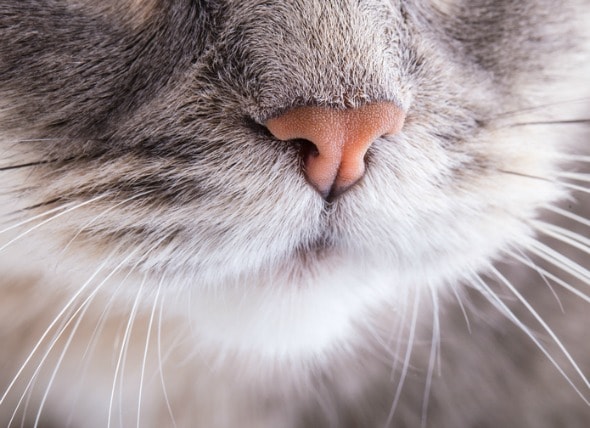chlamydia in cats uk
This bacteria occupy and infect the conjunctiva cells that leads to inflammation and ocular discharge. Chlamydia in cats is one form of the feline upper respiratory disease and those with a chlamydophia infection will also have a viral upper respiratory.

Chlamydia In Cats What It Is And What It Isn T Catster
Sykes J E Allen J L Studdert V P et al 2001 Detection of feline calicivirus feline herpesvirus 1 and Chlamydia psittaci mucosal swabs by multiplex RT-PCRPCR.

. It is very easily spread from cat to cat. As the name suggests its a feline disease and theres no strong evidence of it being contagious for humans. Though its contagious among other cats youll be glad to hear its not zoonotic and would be extremely rare for you to catch it.
Feline chlamydial conjunctivitis is an infection caused by a bacterial organism called Chlamydophila felis. It is rarely fatal but can be a real problem because the symptoms may be very difficult to clear up. At first it only affects one eye but within a few days it might possibly affect both eyes.
Chlamydia in cats is a bacterial infection that typically affects the eyes. Studies using both culture and polymerase chain reaction PCR indicated that cats less than 1 year of age were the most likely to be infected with Chlamydia and cats older than 5 years were the least likely to be infected. With treatment the prognosis is positive.
Routine hygiene precautions are recommended when handling and treating. Dawson S Gaskell R Jarrett O S 1999 Vaccination in cats - an update. All ages of cats can be infected but disease is seenmost commonly in young kittens 5 - 12 weeks of age and cats in a community such as breeding catteries and rescuecentres.
Chlamydia felis is a Gram-negative bacterium that is an obligate intracellular parasite of cats. Although disease caused by Chlamydophila felis in cats has been referred to as feline pneumonitis Chlamydophila rarely causes pneumonia in cats. Transmission of and Risk Factors for Feline Chlamydia.
Chlamydia both in dogs and humans can be asymptomatic wherein signs are not always apparent. Chlamydia is not particularly common in the average pet cat but can be a significant problem in cats in close contact. There have been suggestions of other chlamydial agents occurring in cats but there is little evidence that they are clinically relevant.
Keep infected cats away from healthy cats. Known as feline chlamydia its fairly common and can affect the upper respiratory system or eyes. Feline chlamydia is a bacteria-based disease that causes upper respiratory infection in cats.
Different strains of Chlamydia felis and Chlamydia pneumoniae bacteria cause significant eye infections in cats. The most common signs of chlamydia in cats involve the eyes or the upper respiratory tract nose or throat and only when infection is not treated does it spread to the lungs. Chlamydia felis infection is relatively common in cats it is thought to be a cause of up to 30 of cases of chronic conjunctivitis.
Chlamydia felis previously known as chlamydophila is an infection in cats caused by a certain type of bacteria. Symptoms can lead to itchy problems in affected areas. Vet Microbiol 81 2 95-108 PubMed.
The main chlamydial agent recognised in cats is Chlamydophila felis which was previously known as Chlamydia psittaci feline strain. In addition it may also affect the genital area although thats less common in cats. If your cats have some dirt on its eyes you can follow these 6 simple.
Chlamydia felis is killed by antibiotics belonging to the tetracycline family. Chlamydiosis typically affects young cats under 9 months of age. Cats that have developed this infection will often exhibit traditional signs of an upper respiratory infection such as watery eyes runny nose and sneezing.
The veterinarian may be able to make a tentative diagnosis of chlamydia based on presenting symptoms. One study reported that a large number of cats and dogs become unowned each year in the UK which may have considerable implications for their welfare. Chlamydiosis can affect cats of all ages however it occurs most often in kittens between 5 and 9 months of age or cats in overcrowded or stressful environments such as animal shelters and breeding catteries.
In Practice 21 2 71-74 VetMedResource. Heres what you should know about the symptoms diagnosis and treatment of this common eye infection in cats. Chlamydia is typically associated with venereal disease in humans but the bacteria can cause cats to suffer feline chlamydiosis which looks like conjunctivitis and an upper respiratory infection.
This bacteria has also been reported to infect the genital tract and joints. Chlamydia psittaci is considered zoonotic which means humans can get bacteria from birds. Its not life-threatening but for cats who live outside or spend time at groomers kennels or around other cats vaccination against the disease.
There have been one or two reports of human conjunctivitis following contact with a cat harbouring C felis but the risk appears to be extremely low. As told before chlamydia in cats is caused by a bacterium called Chlamydophola felis. This highly contagious disease occurs mainly in places where many cats live together in confined or small spaces.
The Feline Centre Department of Clinical Veterinary Science University of Bristol UK. What is Cat Chlamydia. Chlamydia felis does not survive outside of the host so close contact between cats is required for transmission usually via ocular discharges.
However as there is a different. The disease in cats is also known as feline pneumonitis which can be misleading because these bacteria rarely cause pneumonia in cats. If the symptoms are limited to the eye a treatment applied directly into the eye such as a medicated eye drop containing tetracycline may be effective but it must be a long course at least 2 weeks is.
Humans can be infected with Chlamydia psitacci but the bacterium that infects cats Chlamydophila felis is highly adapted to this species. Although cats of all ages can be infected the disease is most commonly seen in kittens or where cats are kept in groups or housed. Sometimes called Chlamydial Conjunctivitis chlamydia in cats is caused by the bacteria Chlamydia felis.
Many different viruses cause cat respiratory infections with feline calicivirus being the most common. Causes of Chlamydia in Cats. Chlamydiosis refers to a bacteria based chronic respiratory infection caused by the Chlamydia psittaci bacterium.
Feline Chlamydophila is regarded as a primary conjunctival pathogen and infection always involves the eye resulting in conjunctivitis and occasionally also causing signs of rhinitis with sneezing and nasal discharge. The Chlamydophila bacterium is readily transmitted from cat to cat. Discharge from affected areas can be observed in dogs and humans.
Cat chlamydia while a serious threat and a potentially chronic disease is easily preventable through vaccination and cured by antibiotics and replacement fluid therapy. It is a bacteria that invades and infects your cats eyes and is one of the most common causes of conjunctivitis in cats. Chlamydial conjunctivitis is an infection of the membrane around the eye the conjunctiva.
When a cat shows tears or inflammation in one or both eyes it may be a sign that it has been infected with feline chlamydia. Felis can cause up to 30 percent of chronic conjunctivitis in cats. It can cause conjunctivitis or infection of the inner eyelids and sclera or whites of the eyes.

Chlamydophila Felis Infection Feline Chlamydophilosis International Cat Care

Pin By Taha On Cat Breeds Cat Breeds Cats Cat Call

Upper Respiratory Infection Chlamydia In Cats Petmd

Feline Herpesvirus Fhv Infection International Cat Care

Upper Respiratory Infection Chlamydia In Cats Petmd

Chlamydia Disease The Brook Vet

Chlamydia In Cats What It Is And What It Isn T Catster

Herpesvirus And Chlamydial Eye Infections In Cats Oculus Vet

Chlamydophila In Cats Help Advice Cats Protection

Chlamydial Conjunctivitis In Cats Vca Animal Hospitals

Vaccination Of Cats Against Infectious Upper Respiratory Disease Today S Veterinary Practice


/Kittens-de94dd79a26540569bf7fa6326885464.jpg)
